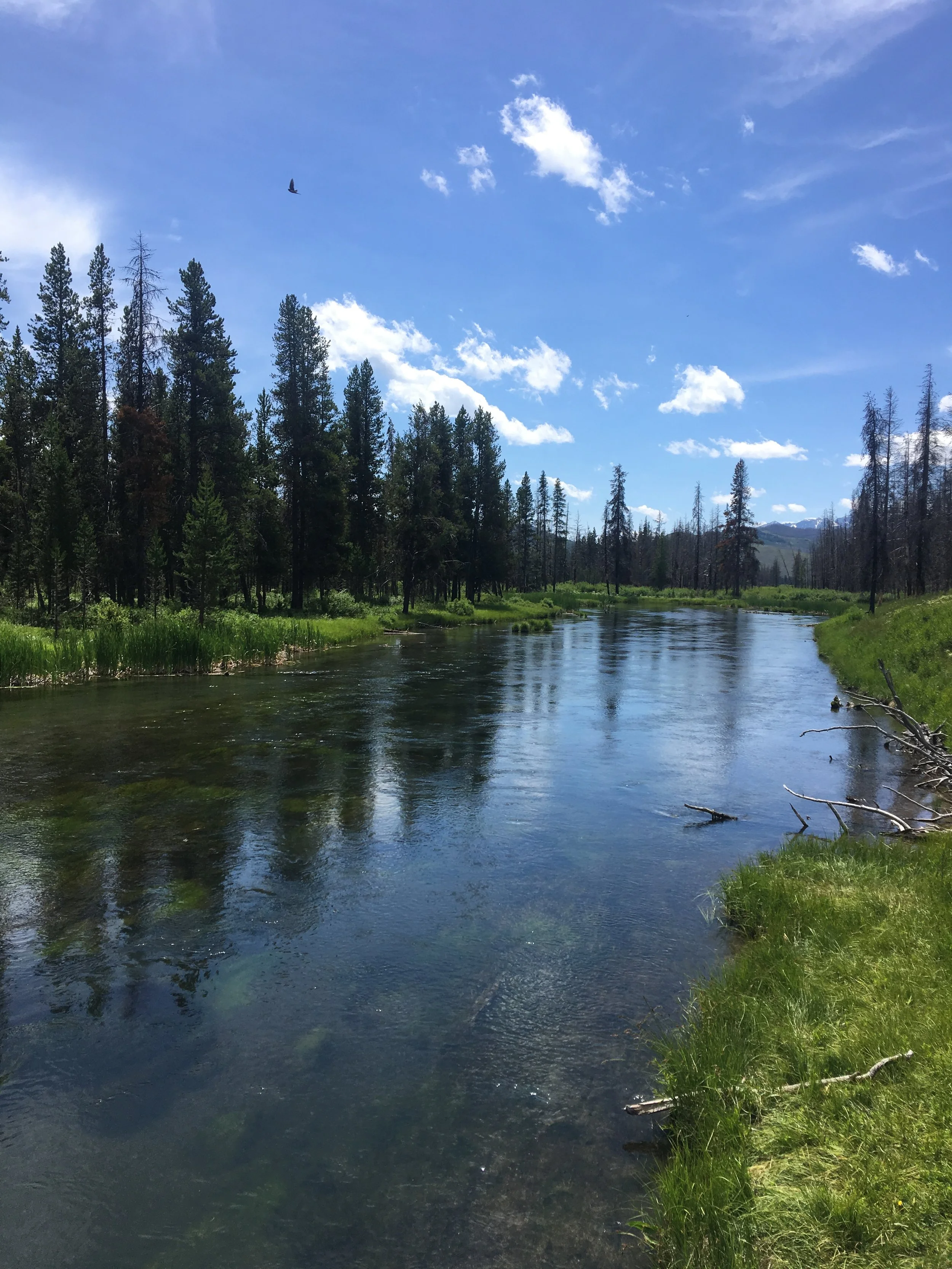By Elyce Gosselin, Natural Resources Technician for Teton Conservation District
The view from Huckleberry Hot Springs. Naegleria fowleri can be found downstream of hot springs, as well.
Jackson locals and tourists alike love to spend time in the hot springs around here, but what other organisms are spending time in those springs? A great team of hydrologists from the United States Geologic Survey (USGS) Wyoming-Montana Water Science Center visits several times a year to try to figure out exactly that.
In July, I spent a couple of days with Peter Wright, Elliott Barnhart, and Megan Moss from the USGS collecting water samples at a few local hot springs. We visited Granite Hot Springs south of Jackson, as well as Polecat and Huckleberry Hot Springs in Grand Teton National Park, to sample for pathogens. Escherichia. coli (E. coli) and Naegleria fowleri (N. fowleri) DNA have been detected in the hot springs in the park. While some E. coli cause no harm to humans, some are pathogenic and can cause symptoms such as diarrhea when accidentally ingested. Naegleria fowleri, on the other hand, is rare but can be deadly.
This diagram created by the CDC shows the different life stages of Naegleria fowleri.
Naegleria fowleri is an amoeba that can be found in warm freshwater. The amoeba prefers relatively high temperatures so it is commonly found in water bodies like hot springs, natural pools and ponds in warm environments, or even untreated water at water parks. When living in a water body, N. fowleri feeds on bacteria and yeast cells, so what makes it dangerous to humans? Well, if it somehow enters a human’s nose, N. fowleri can travel to the brain where it switches from harmlessly feeding on bacteria to feeding on brain tissue and immune cells. Unfortunately, this is difficult to diagnose because it can take days for symptoms to present and it’s highly rare. The result is very low rates of survival once infected.
Polecat hot springs in Grand Teton National Park.
How worried should we be about this brain-eating amoeba in Teton County? Well, its DNA has been detected in Huckleberry Hot Springs, Polecat Hot Springs, and Kelly Warm Spring in Grand Teton National Park. This doesn’t necessarily indicate that the amoeba is currently alive in the hot springs, but it does indicate that it has at least been present in the hot springs relatively recently. While a N. fowleri infection is unlikely, the previous park superintendent David Vela said that he would “highly encourage individuals to avoid contact with these waters”. If you do find yourself or your children lounging in some hot springs, the best way to prevent an infection is to avoid splashing, dunking, or any other activities that could potentially cause water to go up your nose.




